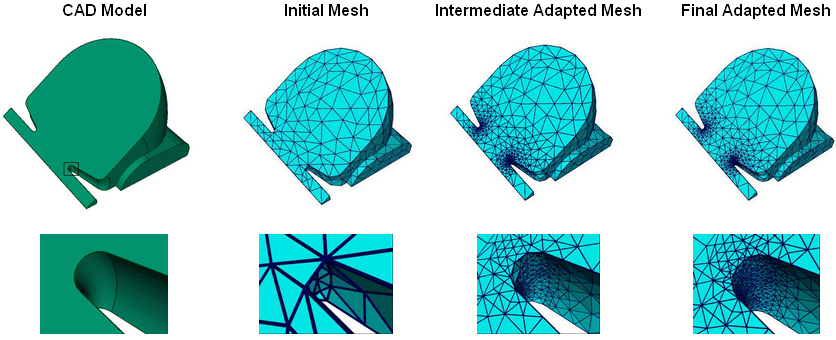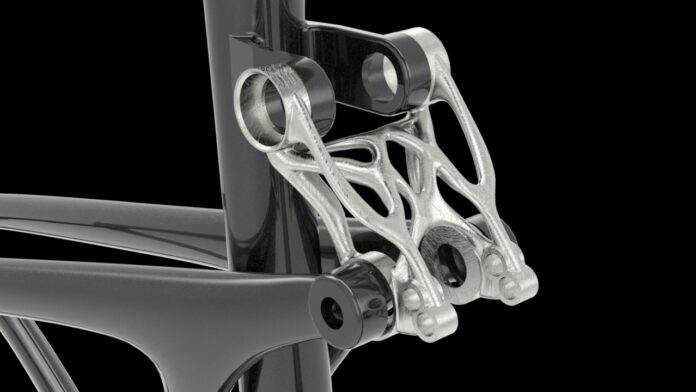One of the most fundamental steps in a product development process is the modelling, which entails creating 3D models of objects. Here is the thing, some designers believe that CAD is the only way forward – completely removing mesh workflows from the file preparation process while others think that MESH is slightly faster. The first step in building consensus is to clarify the importance of CAD & MESH – individually.
The first observation we made in our team is that engineers have different understandings of CAD and mesh. The confusion may lie in this very first point, because how can you break down the difference between both concepts and their benefits if you do not understand them? Some engineers consider CAD and mesh as (3D) models while, in reality, they refer to processes that enable to create (3D) models. Literally speaking, Computer-aided design (CAD) is the use of computers (or workstations) to aid in the creation, modification, analysis, or optimization of a design. A mesh on the other hand, is a representation of a larger geometric domain by smaller discrete cells. A mesh model consists of vertices, edges, and faces that use polygonal representation, including triangles and quadrilaterals, to define a 3D shape.
When it comes to 3D printing, both concepts can be used in a file preparation workflow. “Commonly CAD starts with sketching and then using subtractive tools to build 2.5D or 3D designs. Meshing starts with existing CAD, breaking CAD into fine elements to run mathematical calculations for different types of simulations”, Jaideep Bangal, Design and Manufacturing – Global Technical Team, Altair Engineering states.
This means that CAD may exist on its own, but creating a mesh model often requires an upfront CAD work hence the concept of “meshing in CAD software”. Here again, several nuances should be made. Indeed, when talking about meshing in a CAD system, a design engineer may refer to triangularisation of a model to export it to other packages, discretisation of a model into elements suitable for a FEM package, or meshing of u- and v-parameter isocurves to let the user check the quality of a surface visually. For example, a triangularisation of a model can lead to the generation of an STL file, whereas the discretisation of a model can lead to the generation of mesh file with tetrahedrons.
Speaking of file preparation, Altair’s expert states: “engineers commonly use STL, CAD, 3mf etc file formats to prepare designs for 3D printers. They still need a mechanism to convert this data into printer specific format, which can be exported by these tools or printers”.
Applications specific to CAD and Mesh

Meshes can serve different purposes including reverse engineering, dimensional analysis and 3D printing – which is the angle we focus on.
In reverse engineering, engineers use meshes as a template to draw usable CAD of the scanned part. This can help to replace lost CAD, or create CAD for legacy parts. As far as dimensional analysis is concerned, a mesh can be overlaid onto original CAD to generate a colour map that indicates areas of the component that deviate from the CAD and how far the scanned part is out of tolerance. Whereas for 3D printing, they are saved as STL files. This means, a designer can import a mesh to a 3D printer and fabricate the part from this model.
CAD on the other hand, can serve a different range of objectives: design creation, design modification, manufacturing or digital inventory. Be it for design creation or design modification, there are a wide range of suite-specific CAD that provide a variety of tools that will enable designers to create models from scratch, including prototypes, tooling, and much more – on the other hand, to modify the designs based on desired requirements.
As Bangal notes, “almost every engineering company has some sort of CAD capabilities, engineers save their design work using PLM systems along with various design iterations during the product development process. On the contrary, CAE experts create mesh files from CAD provided by design engineers for simulations. They clean up CAD, prepare models, generate the mesh, and analyse performance using simulation solutions.”
That being said, the various objectives that may lead to the use of CAD or Mesh are also the ones that help differentiate their unique advantage: “CAD is built upon geometry, which is enabling engineers to modify their designs quickly, even from neutral CAD file formats. But it also creates geometry nuances that might make it unusable for simulations”, Bangal comments. “Unless engineers are using meshless technology such as Altair® SimSolid®, all simulation solutions create finite element models from CAD for performance analysis or to prepare the model for manufacturing, that’s mesh”, he lays emphasis on, taking the example of Altair’s products.
A key focus on workflows for file preparation
When creating a file for 3D printing, most CAD programs convert the file to STL format (which converts it to a triangular polygon mesh). However, reality reveals that, “both CAD and mesh are important depending on when it is used and who uses it. Typically, CAD comes first followed by mesh during the product development workflow. Design engineers prefer to work in a CAD environment while simulation experts use mesh. If CAD is king, mesh is kingmaker!” So, what should we tell to design engineers who continuously compare both in order to decide which one they should go for?
To this question, Bangal recommends hybrid technologies. Just like a hybrid manufacturing approach brings the best of both AM and conventional manufacturing processes, a hybrid software technology would bring the best of CAD and Mesh. One company that is surfing on this concept is Materialise. For the software company, bringing together CAD and mesh during file preparation is like peanut butter and jelly – great on their own, but even better together.
“For example, CAD is known for its impressive capabilities while editing parts because it’s of a higher resolution than mesh. It will be seamless to go from design optimization software to file preparation with Magics and complete tasks such as enhancing parts, creating fillets, and adding holes. However, there are also clear benefits when using mesh while preparing parts for 3D printing. It’s crucial to complete certain steps with mesh, especially during build preparation and for applications with organic textures. It is also very powerful for operations where you want to ignore the complexity of designs, such as the wrapping of a complete engine assembly. Mesh contains all the information about the inside and outside of 3D models necessary to slice parts and begin 3D printing”, the 3D printing company explains.
That’s the reason why, the company recently combined both into a seamless workflow within its Magics software solution – its data and build preparation software.
While we can’t wait for design engineers to share their feedback on this, we are ready to take Bangal’s statements as valid: “combining the benefits of an easy alteration of parametric CAD and the flexibility of Polynurbs descriptions, to address the organic shapes resulting from topology optimization, as they are often found in designs for 3D printing.”
This exclusive feature has first been published in the January/February issue of 3D ADEPT Mag.
Interestingly, Materialise will discuss the best of CAD & MESH in an upcoming webinar. For further resources on the topic, feel free to register here.
Remember, you can post job opportunities in the AM Industry on 3D ADEPT Media free of charge or look for a job via our job board. Make sure to follow us on our social networks and subscribe to our weekly newsletter : Facebook, Twitter, LinkedIn & Instagram ! If you want to be featured in the next issue of our digital magazine or if you hear a story that needs to be heard, make sure to send it to contact@3dadept.com






